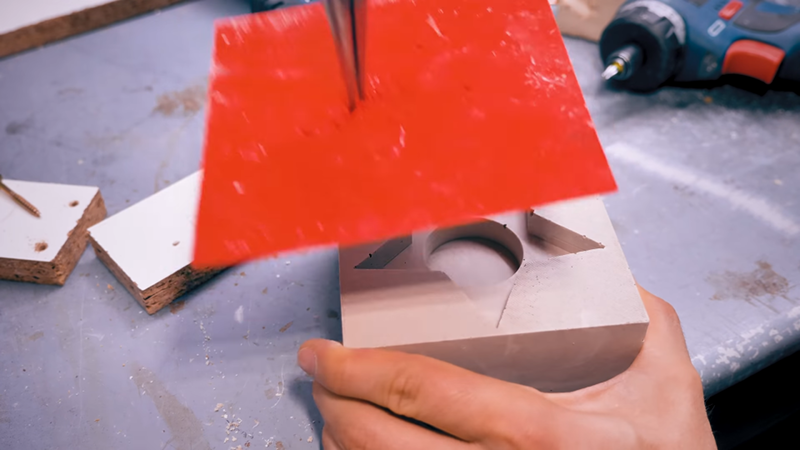[Thomas Sanladerer] wanted to create some molds using 3D printing for concrete and plaster. He used a delta printer with flexible filament and documented his process in the video below.
If you’ve printed with flexible filaments before, you know you need an extruder that has a contained path. [Tom] borrowed a printer, but it didn’t have that kind of set up. The first step was to swap extruders with another printer.
Some scrap wood made a box for the positive model. [Tom] used a concrete-based mortar since he didn’t have real concrete ready for this test piece. However, his ultimate goal was to use concrete which he did when creating a final piece — an on-air sign — that he documented in several other videos.
The first attempt had some cracking and it looks like he may be pulled the mold too early. A second try with plaster gave much better results. [Tom] then experimented with painting the plaster to get a different look. In a follow-up video, he addresses some of the comments he got on the previous videos.
We often forget that concrete is easy to use and creates things of good substance. Of course, instead of casting it, you can print it directly with the right gear.















If I was the sponsor of this video, I would have rather Sanladerer did a project that my printer could have done without modification…but maybe that’s just me.
It wasn’t sponsored. The printer he used was one that was loaned to him for review.
The first thing he says after the title card is “Thanks to Atom 3D for sponsoring this project”. It also says the same thing in the video description.
The guy has a bit of an accent. I wonder if he was given unclear advice that any gain, like lending of an expensive object is a sponsorship.
Modifying a printer is half the fun of the hobby. I don’t think it takes away from the appeal of the product at all.
Not for a $1,200 printer it’s not. That’s definitely expensive enough to be in the “This thing better work” category. If you’re still hacking and modding a printer that cost more than ~$500 to get it to do what you want, then you’ve taken a wrong turn somewhere.
Like the Lamborghini owner that adds turbos and an after market computer.
Should have purchased a Bugatti. What an idiot.
Too much water in the mix???
Maybe he used kitty litter? Packed earth would hold up better. This looks like a job for plain Portland Cement + some sand.
Use perlite in you concrete. Always looking for ideas to use my Prusa for, that are mostly practical.
I also tried casting concrete in printed PLA, I gave up the form and put it into the oven heating up to about 80°C. The PLA gets soft and can easily removed from the concrete.
Another use for a vibrator after pouring to remove air bubbles. I’ve seen reciprocating saws and vibrating sanders also used… thinking other tools just not thinking of at the moment. Might be some sorts of acetone, ethyl acetate and/or heating smoothing method for the printout surface to be smoother too. Then consider resists like dawn dish soap, castor oil, silicone specific spray and other methods. Interesting though… I usually think foam or wood for cement mixes. 3D printing for metal molds where you burn out the 3D print comes to mind. That now will change. Neat… maybe.
Video doesn’t play.